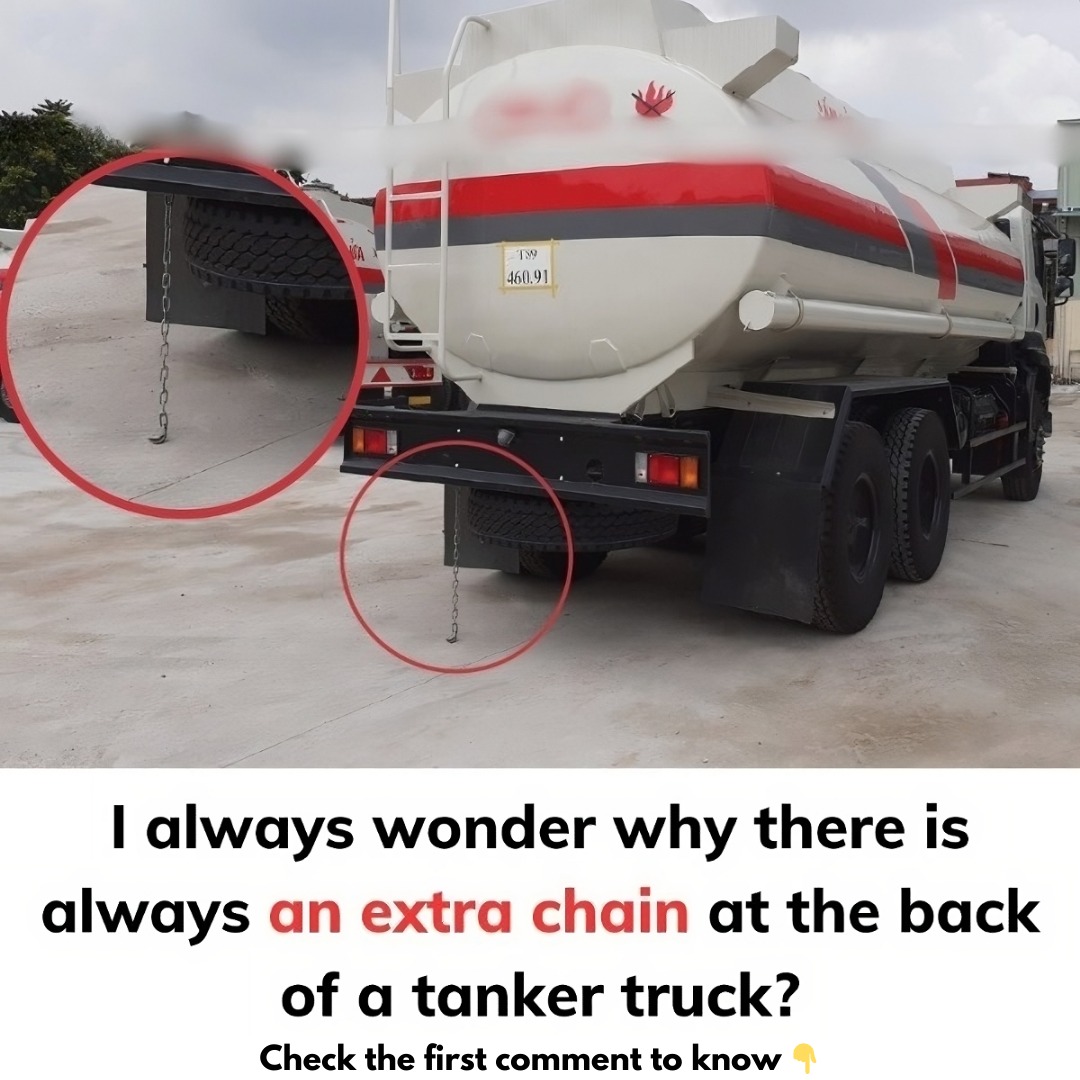If you’ve ever seen a chain dangling from the back of a tanker truck, you might wonder what it’s for. It’s not there as a backup hitch or just for show; it’s actually a critical safety feature. This chain plays a key role in preventing a serious hazard—fires caused by static electricity. In this article, we’ll explore why tanker trucks need this extra chain, how it functions, and why it’s essential for safely transporting flammable liquids.

Understanding Static Electricity in Tanker Trucks
Tanker trucks are designed to carry highly flammable materials, such as gasoline, oil, and other fuels. As these trucks move, they interact with their environment in a way that generates static electricity. But what exactly causes this static build-up?
1. How Static Electricity is Generated Inside Tankers:
- Movement of Liquids: As the liquid fuel moves and sloshes around inside the tank, it rubs against the tank walls, creating friction.
- Air Friction: At the same time, the dry air inside the tank rubs against the interior surfaces, further increasing friction.
- Charge Imbalance: The combination of these interactions causes an imbalance of electric charges, resulting in the build-up of static electricity on the tanker’s surface.
While static electricity might seem harmless, it poses a major threat when it comes to transporting flammable substances.
The Danger of Static Electricity in Tankers
Static electricity isn’t just a minor inconvenience; it can become a significant hazard if not managed properly, especially when dealing with highly flammable materials like gasoline or oil.
1. Risk of Fire and Explosion:
- Potential for Sparks: Static electricity can discharge through sparks, which can ignite the flammable vapors that surround the tanker.
- Fire Hazard: Even a small spark in an environment filled with fuel fumes can result in a fire or even an explosion.
- Safety Measures: To ensure the safe transportation of fuel, preventing static electricity from reaching dangerous levels is crucial.
How the Extra Chain Neutralizes Static Electricity
So, how does the extra chain help manage this hazard? The chain serves a very specific purpose: it provides a direct path for static charges to move safely to the ground.
1. Conductivity and Grounding:
- High Conductivity: The chain is made of metal, which has excellent conductivity. This allows it to effectively channel electric charges.
- Continuous Discharge: As the tanker moves, the chain drags along the ground, providing a direct route for static charges to be transferred into the earth, a process known as grounding or earthing.
- Neutralization: As the static charge accumulates on the tanker, it travels down the chain and is safely dispersed into the ground.
By continuously discharging static electricity, the chain keeps the tanker electrically neutral, significantly reducing the risk of fire.
The Role of the Road Tanker Grounding System (RTR)
The extra chain isn’t the only safety measure in place to manage static electricity. Another safety system used alongside the chain is the Road Tanker Grounding (RTR) system, which is especially useful during fuel loading and unloading.
1. How RTR Works During Fuel Transfer:
- Connecting Cables: During fuel transfer, grounding cables connect the tanker to the fuel source, creating a path for static discharge.
- Real-Time Monitoring: RTR systems often include sensors that monitor the grounding connection to ensure continuous safety.
- Preventing Sparks: By maintaining constant grounding, the RTR system ensures that any static charge generated during fuel transfer is safely neutralized.
This system offers an additional layer of protection, particularly when the risk of static electricity is highest.
Why Both Chains and RTR Systems Are Critical for Safety
While both the grounding chain and the RTR system serve to eliminate static electricity, they operate in slightly different ways.
1. Managing Static Electricity: On the Move vs. Stationary:
- The Chain: Works while the tanker is moving, continuously releasing static charges that build up during transit.
- The RTR System: It’s most effective when the tanker is stationary, such as during fuel loading or unloading, providing real-time monitoring and grounding.
Together, these measures create a comprehensive safety mechanism that significantly reduces the risk of fires or explosions.
A Simple Solution to a Complex Problem
Using a chain to manage static electricity may seem old-fashioned, but it’s a simple, cost-effective solution that remains highly relevant today. It’s a classic example of how straightforward measures can solve complex problems. By dragging along the ground, the extra chain continuously releases static charges, preventing them from accumulating to dangerous levels. Paired with modern grounding systems like the RTR, it forms a reliable defense against potential fires.
Conclusion: Why Tanker Safety Measures Matter
The extra chain at the back of a tanker truck isn’t just an insignificant detail—it’s a crucial safety feature designed to prevent the build-up of static electricity. By grounding excess charges as the truck moves, the chain helps prevent dangerous sparks that could lead to fires or explosions. When combined with advanced RTR systems during fuel transfer, these safety measures make transporting flammable liquids much safer. So, the next time you see a tanker truck with a trailing chain, you’ll know it’s there for an important reason—keeping the journey safe, one link at a time.





